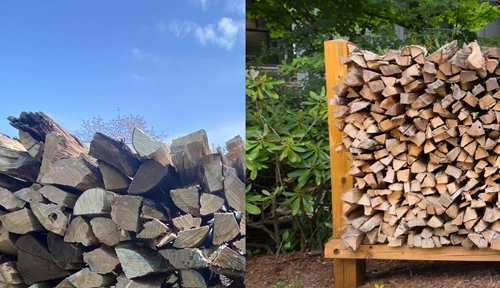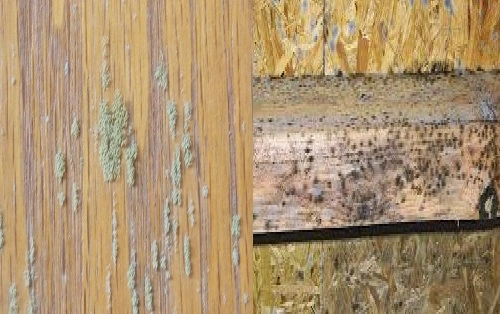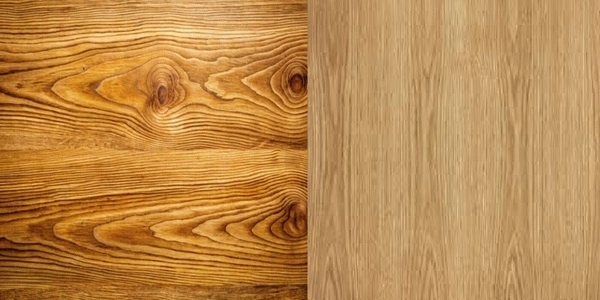When purchasing firewood, understanding the terminology used to describe its quantity and size is essential. Two common measurements you’ll encounter are the face cord and the full cord of wood. While they may sound similar, these terms refer to different amounts of firewood. Knowing the differences between them can help you make informed decisions and ensure you get the right amount of wood for your needs.
In this article, we’ll explore what a face cord and a full cord of wood are, how they compare, and how to choose the right measurement for your firewood requirements.
What is a Cord of Wood?
A cord of wood is the standard measurement for firewood in the United States. It is a tightly stacked pile of wood measuring 4 feet high, 4 feet wide, and 8 feet long, equating to 128 cubic feet. This measurement includes the wood and the air gaps between the logs.
Key Features of a Full Cord:
1. Dimensions:
- 4 feet (height) × 4 feet (width) × 8 feet (length).
2. Volume:
- Totaling 128 cubic feet of stacked wood.
3. Log Length:
- Logs are typically cut to 16 inches in length to fit most fireplaces and wood stoves. However, the logs can vary in length depending on the seller and the buyer’s specifications.
A full cord is the largest standard measurement for firewood and provides a significant amount of wood, ideal for homeowners who rely on wood as a primary heat source.
What is a Face Cord of Wood?
A face cord, also called a rick, is a smaller measurement of firewood that is commonly used in the firewood industry. While it has the same height and width as a full cord (4 feet × 8 feet), the depth is determined by the length of the logs, which is usually 16 inches.
Key Features of a Face Cord:
1. Dimensions: 4 feet (height) × 8 feet (length), with a typical depth of 16 inches.
2. Volume: A face cord contains approximately one-third the volume of a full cord, which equals about 42.7 cubic feet.
3. Log Length: Logs in a face cord are commonly 16 inches long, but this can vary depending on the seller.
A face cord is a more manageable and affordable option for homeowners who use firewood occasionally or have limited storage space.
Key Differences Between a Face Cord and a Full Cord
| Feature | Full Cord of Wood | Face Cord of Wood |
|---|---|---|
| Dimensions | 4 ft × 4 ft × 8 ft (128 cubic feet) | 4 ft × 8 ft × log length (commonly 16 inches, ~42.7 cubic feet) |
| Volume | 128 cubic feet | Approximately 1/3 of a full cord (~42.7 cubic feet) |
| Log Length | Varies; typically 16–24 inches | Typically 16 inches |
| Cost | More expensive due to larger volume | Less expensive, proportional to the smaller quantity |
| Common Use | Long-term heating, bulk storage | Occasional fires, smaller wood stoves |
How to Choose Between a Face Cord and a Full Cord
Your choice between a face cord and a full cord will depend on several factors:
1. Heating Needs:
- Full Cord: Best for homeowners who rely on wood as a primary heat source throughout the winter. A full cord provides enough wood to last for months when used consistently.
- Face Cord: Ideal for occasional use, such as a weekend fire in the fireplace or an outdoor fire pit.
2. Storage Space:
- A full cord requires significantly more storage space than a face cord. If you have limited room, such as a small backyard or a compact wood shed, a face cord is a more practical option.
3. Budget:
- A face cord is more affordable, making it a good choice for those on a budget or for testing a new wood supplier without committing to a larger quantity.
4. Frequency of Use:
- If you only burn wood occasionally, a face cord may be sufficient. For regular use in a wood stove or fireplace, a full cord is more cost-effective.
Cost Comparison
The cost of firewood depends on factors such as the type of wood, whether it’s seasoned or green, and your location. However, here’s a general idea of what you might pay:
1. Full Cord:
A full cord of seasoned hardwood (like oak, maple, or hickory) typically costs between $250 and $500, depending on your region and the quality of the wood.
2. Face Cord:
A face cord usually costs between $80 and $150, making it about one-third the price of a full cord.
Pro Tip:
When purchasing firewood, always confirm the dimensions and log length with the seller to ensure you’re getting the amount you expect. Some sellers use the term “face cord” loosely, so understanding the exact measurements is essential.
Tips for Purchasing and Storing Firewood
1. Choose Seasoned Wood:
- Seasoned wood, which has been dried for at least 6–12 months, burns more efficiently and produces less smoke than green wood.
2. Inspect the Wood:
- Ensure the wood is free of pests, mold, and excessive moisture. A moisture meter can help you verify the dryness of the wood.
3. Proper Stacking:
- Stack the wood tightly to minimize air gaps and maximize the use of storage space. Use a wood rack or pallets to keep the wood off the ground and reduce moisture exposure.
4. Cover with a Tarp:
- Protect your firewood from rain and snow by covering it with a tarp, but leave the sides exposed for proper airflow.
Conclusion
The difference between a face cord and a full cord of wood lies in their size and intended use. A full cord, with its 128 cubic feet of wood, is ideal for long-term heating and bulk storage, while a face cord, at approximately one-third the size, is more suitable for occasional use or smaller spaces.
When purchasing firewood, consider your heating needs, storage capacity, and budget. Always confirm the exact dimensions and ensure the wood is properly seasoned for the best burning experience. Whether you choose a face cord or a full cord, having a clear understanding of these measurements will help you make the most of your firewood investment.

